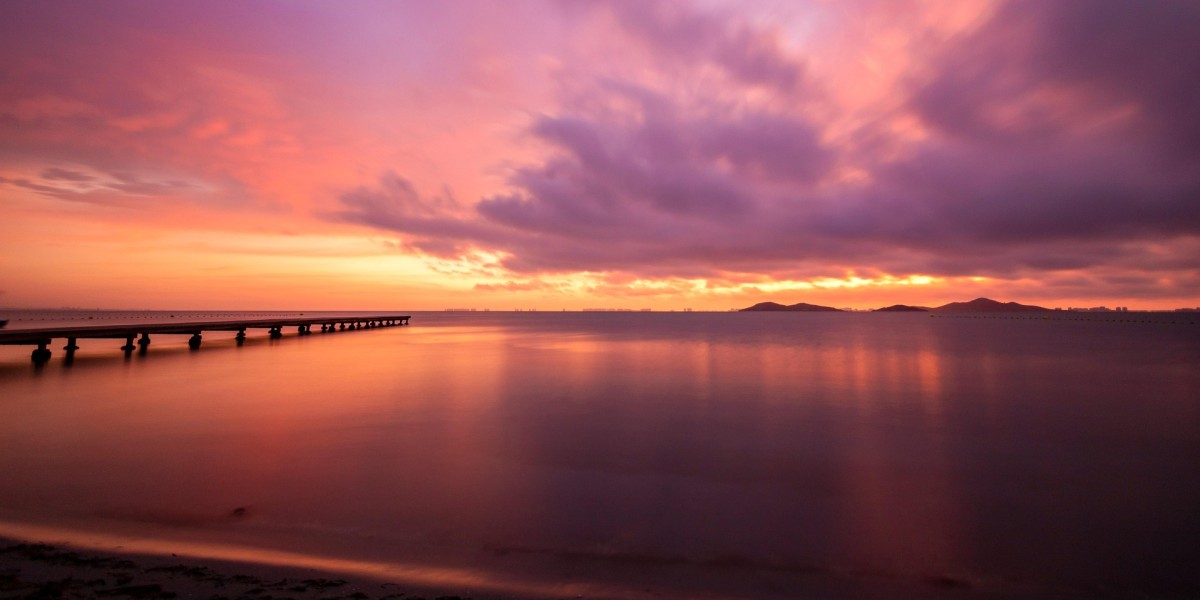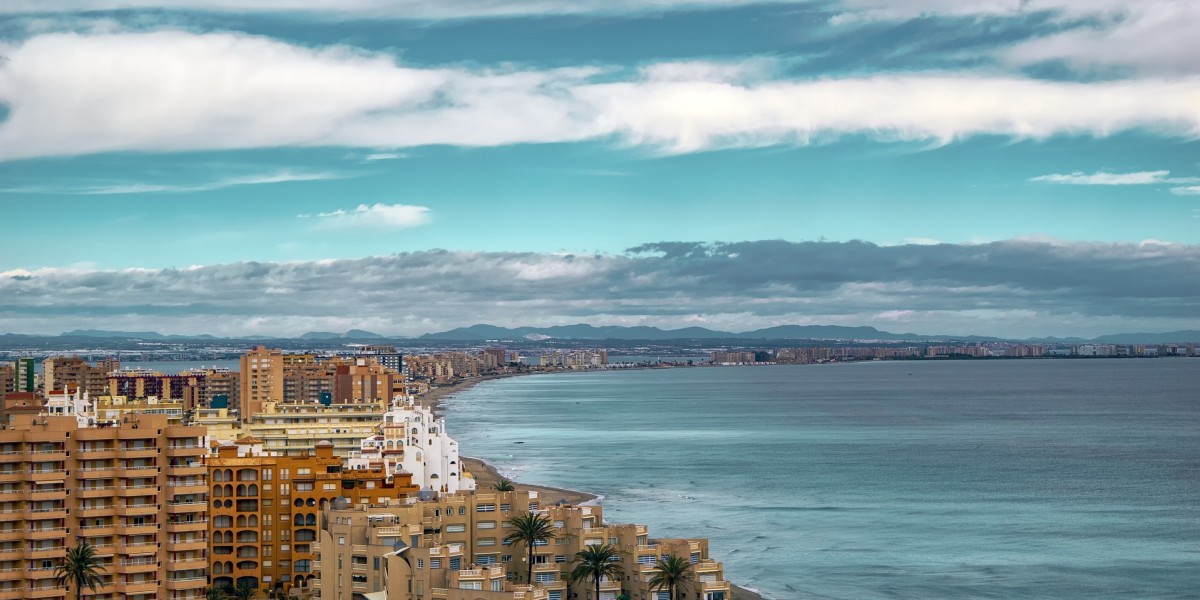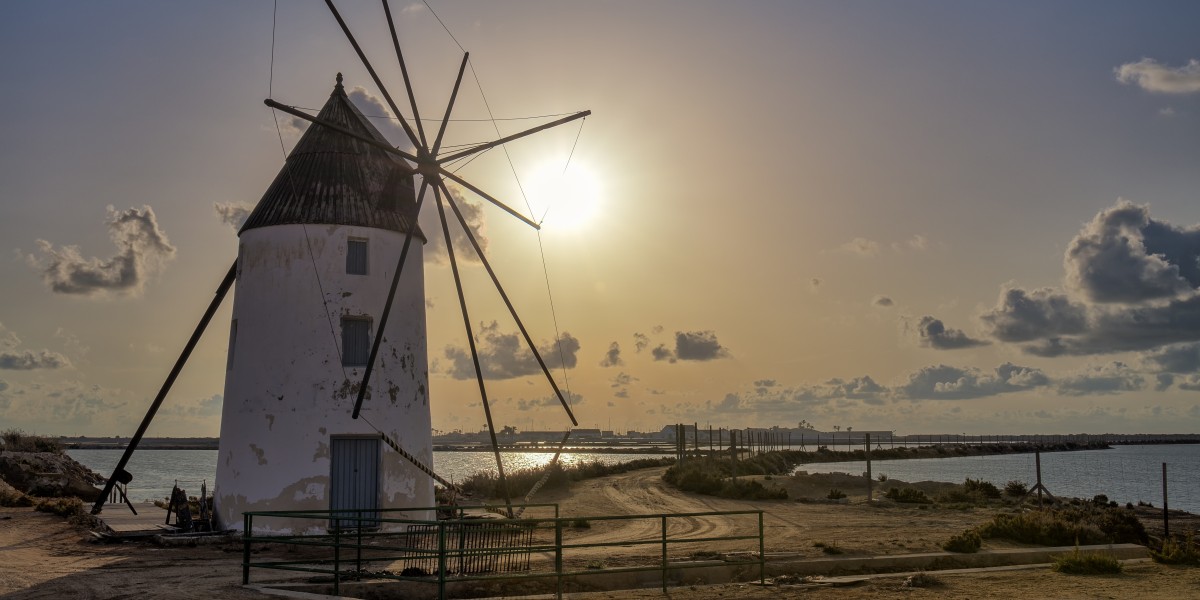
Tucked away on Spain’s sun-drenched Costa Cálida, the Mar Menor is a saltwater lagoon unlike anywhere else in the country. Sitting in the Region of Murcia, southeast Spain, it’s separated from the Mediterranean by a narrow spit known as La Manga. The towns and resorts dotted along its waters—Los Alcázares, San Javier, and Lo Pagán—have built up reputations for affordable homes.
Living on Mar Menor means plenty of golf courses and a relaxed holiday vibe that has drawn British sun-seekers and international residents for decades.
What is Mar Menor like to live?

Days tend to roll by under near-constant blue skies—thanks to a microclimate that dishes out more sunshine here than in most corners of Spain. The lagoon’s shallow, warm waters draw many locals and newcomers. Go for an early-morning dip, a paddle on the kayak, or a relaxed stroll along the golden beaches. With the mix of classic fishing villages and some of Spain's best golf courses, there’s a real blend of communities.
It’s an area prized for its unique landscape and resort-style living, making it popular with buyers looking for cheap property on Mar Menor or a laid-back holiday spot. The links to Murcia and Alicante airports keep you within easy reach of family, friends, and onward travel along Spain’s glittering Mediterranean coast.
Pros and cons of living on Mar Menor
Mar Menor doesn’t hold back in giving you the full flavour of coastal living, dishing up plenty to love—along with a few quirks that catch newcomers by surprise.
Some of the upsides of life here include:
- Buckets of sunshine, warm winters, and a friendly seaside vibe that makes it easy to spend time outdoors year-round.
- Affordable property options, with everything from apartments near the beach to homes in well-kept golf resorts—ideal if you’ve got your eye on cheap property or a spot in a Mar Menor golf resort.
- Proximity to Murcia and Alicante means quick escapes or visits from family are a breeze.
Of course, a few things take getting used to:
- The area can go very quiet in winter, especially in some resort zones.
- Environmental concerns, like water quality and the odd “green tide” in the lagoon, have been in the headlines, and locals are hoping for long-term improvements.
Cost of living on Mar Menor

Life on Mar Menor is generally quite gentle on the wallet, especially compared to Spain’s bigger coastal cities. Eating out is refreshingly affordable—a relaxed meal in a mid-range local restaurant comes in at around €30 per head, including drinks. If you’re in the mood for a proper feast at one of the area’s upmarket seafood spots, expect to pay more.
For the golf lovers, you’re well catered for. A round on one of the local courses can cost anywhere from €30 to €100, depending on where you play and the time of year. If you get hooked and want to play regularly, an annual family membership is around €650.
Utilities tend to be reasonable, too—about €120 a month is a fair average for most people, though this can swing up or down depending on your home, how much you love your air conditioning, and if you’re in a new build or something older. A cold beer in a beach bar will set you back around €3, and you’ll rarely pay more than €2.50 for a decent coffee.
Where to live on Mar Menor

The Mar Menor coast is dotted with towns and resorts that particularly appeal to expats, each offering its own flavour of local life, amenities, and style of living.
Los Alcázares
Often the first port of call for British buyers, Los Alcázares blends old town charm with modern conveniences. The promenade stretches for kilometres along sandy beaches, and there’s a great mix of Spanish and international restaurants, plus familiar faces year-round. The weekly market is legendary for fresh produce bargains, while the old town has a lovely plaza for lazy evenings.
San Pedro del Pinatar
Up at the northern end of the lagoon, San Pedro has a real year-round buzz thanks to its busy marina, thermal mud baths, and lively local fiestas. It’s also handy for kite- and windsurfing. There are good shopping facilities and plenty of chances to practise your Spanish in the old town.
La Manga
For something a bit different, La Manga includes one of Spain’s top golf resorts, packed with sports facilities, bars, and restaurants. The bustling La Manga strip stretches between lagoon and sea and has a high number of English-speaking property owners. It offers a “holiday home with all the trimmings” atmosphere, especially during the main seasons.
San Javier
Just inland from the main lagoon, San Javier is a good bet for those seeking a slightly quieter pace but with all the essentials close by. Good schools, supermarkets, and an easy drive to the beaches make it popular with year-round residents, especially families and retirees looking for good value property.
Property for sale on Mar Menor

When it comes to finding cheap property on Mar Menor, you’ve got a surprising range of choices. There’s a wide selection of homes, from easy-going resorts to more traditional Spanish apartments and townhouses lining the waterfront. While the Mar Menor is known for affordable options, prices do vary a bit depending on location and how close you are to the lagoon itself.
Los Alcázares is one of the most popular picks for purchasing a house, with property for sale averaging around €1,956 per m² in May 2025. San Javier offers even slightly better value, coming in at €1,847 per m², and offers plenty of local amenities plus easy access to both the coast and surrounding countryside.
If you’re drawn to Mar Menor resort property, La Manga del Mar is famous for its strip of sand and beachside lifestyle. La Manga property prices are at roughly €2,023 per m². Just a bit further up, San Pedro del Pinatar has the highest price tag in the whole province of Murcia for property, now at €2,420 per m².
On the rental side, San Pedro del Pinatar leads again, with an average of €8.2 per m² for long-term rentals, compared to nearby Torre-Pacheco, which—being set a little inland from the lagoon rather than right on the water—is a tad more affordable at €8.0 per m².
Mar Menor Lagoon: nature, activities, and practicalities

Mar Menor is Europe’s largest saltwater lagoon. The setting gives this part of Spain a character all its own, and it’s little wonder that the Mar Menor golf resort developments, relaxed fishing villages, and expat-friendly towns have popped up all around its shores.
A few practicalities come with living beside the lagoon; however, most notably, environmental concerns and ongoing local efforts to balance tourism, conservation, and sustainable development.
Things to do on Mar Menor
Beyond property and resort life, there’s plenty to keep you busy. Water sports are a massive draw—think paddleboarding, windsurfing, sailing, and kitesurfing, with conditions that suit both total novices and keen regulars. Nature lovers have excellent birdwatching on their doorstep, especially in the salt flats and natural parks near San Pedro del Pinatar, where flamingos often drop in.
Can you swim in the Mar Menor?
Swimming in the Mar Menor is usually one of the area’s simple pleasures. Thanks to its shallow depth, the water tends to warm up quickly and stays comfortable right through to autumn. Beaches tend to slope very gently, so families with little ones often feel more at ease here than on the open Med.
Is Mar Menor clean?
Cleanliness and water quality have been hot topics in recent years. The lagoon has suffered from issues related to nutrient run-off and over-development along some stretches. However, local authorities and environmental groups have stepped up efforts to restore and improve water quality, with regular clean-up operations, new restrictions, and more careful monitoring.
Jellyfish in Mar Menor
Jellyfish—or medusas in Spanish—are part and parcel of swimming in shallow, warm waters, and the Mar Menor has had its moments where they’ve put in a strong showing. They tend to appear most likely during the height of summer, usually July and August.
Local authorities monitor these trends closely and, over recent years, they’ve installed nets in many popular swimming areas to keep numbers in check. Most stings are mild if you’re careful, but a quick rinse with saltwater and a trip to the pharmacy usually sorts things out.
Living on Mar Menor as an expat

Mar Menor has long been a magnet for expats, particularly Brits and northern Europeans on the hunt for a milder climate and a more laid-back way of life. You’ll find a strong, friendly network of English speakers in both the small towns and the bigger resort complexes and golf communities around La Manga and Torre-Pacheco.
Settling in is made easier thanks to lively local clubs and expat groups. Think golf societies, bowls clubs, volunteer groups, and regular meetups at the local chiringuitos (beach bars). Facebook groups help newcomers get settled and find answers to those everyday queries—from where to get the best curry to how to register with the local health centre. Local events like the annual carnival, beach clean-ups, and tapas routes are a great way to get stuck in and make local friends.
If you’ve got kids or are planning to stay long-term, international schooling is an option, but a little limited locally. The bilingual school, New Castelar College and the British school, King's College Murcia, are the best-known options.
Most newcomers quickly fall for the chilled lifestyle, reliable sunshine, and the mix of familiar comforts—like British pubs and fish & chip shops—with a real Spanish flavour. Shopping at local markets, taking part in fiestas, and learning a bit of basic Spanish go a long way towards feeling at home.
Looking after the Mar Menor Lagoon

It’s impossible to live by the Mar Menor without feeling attached to its unique waters and wildlife. Over the past years, the lagoon has faced real challenges—mainly pollution from agriculture, tourism, and rapid development.
Grassroots campaigns have played a huge role in turning things around for the Mar Menor. Locals have pushed hard for change over the years. Their efforts didn’t go unnoticed; in fact, the lagoon became the first ecosystem in Europe to be granted legal rights, thanks to a landmark campaign led by activists.
It's fair to say that things are slowly looking up because of these relentless efforts. Ongoing clean-ups, environmental education, and community pressure have made a real difference.
If you’re settling here, a bit of care goes a long way. Sticking to designated swimming areas, picking up litter (even if it’s not yours), and using eco-friendly products all add up. Supporting local campaigns and learning a little about the lagoon’s needs is just part of being a good neighbour to this remarkable patch of Spain.
